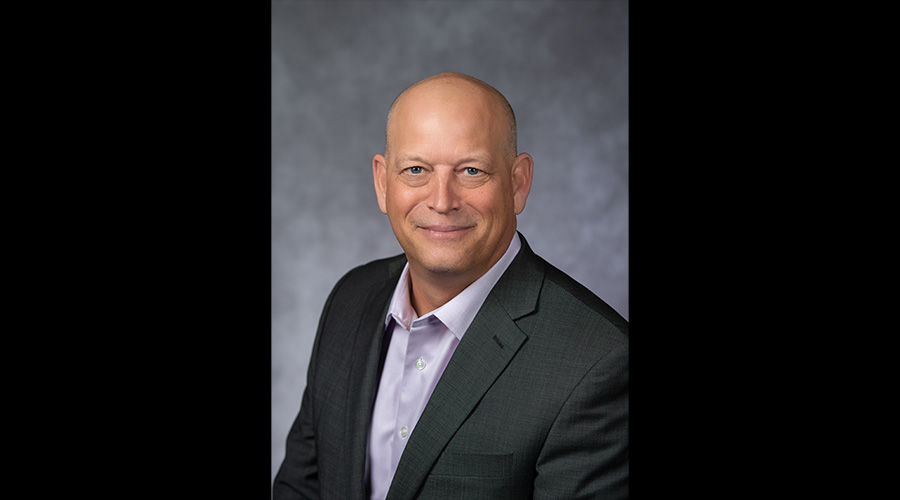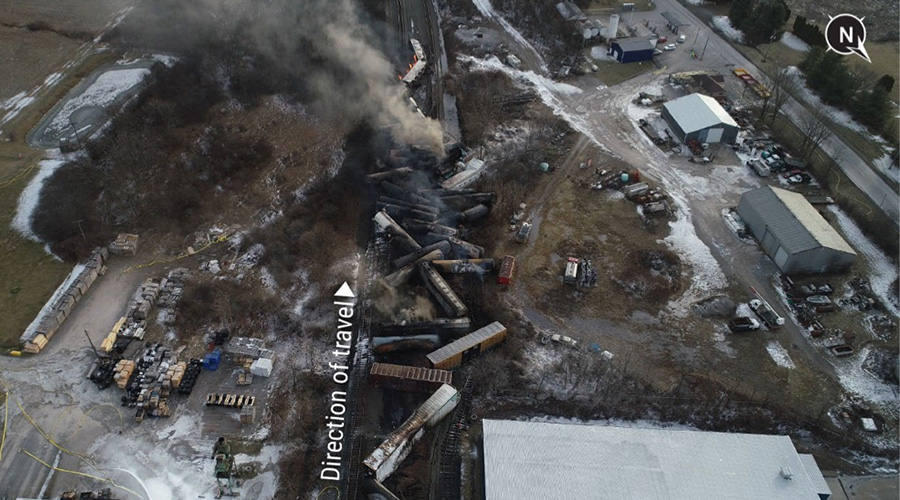Booked: Demand spikes for Short Line Safety Institute's programs
2/22/2024
By Julie Sneider, Senior Editor
Since a Norfolk Southern Railway hazmat train derailed in East Palestine, Ohio, a year ago, railroad safety has remained high on the radar of regulators, political leaders, the media and the American public.
The National Transportation Safety Board has yet to release its final report on the accident’s cause and its recommendations for preventing a similar or worse accident in the future. Also, Congress has yet to pass new rail safety regulations.
But many railroads aren’t waiting for those government actions to get up to speed on safety improvements. The East Palestine incident has helped boost interest in the programs offered by the Short Line Safety Institute (SLSI), according to Executive Director Tom Murta.
Murta says more short lines are expressing interest in, and signing up for, the nonprofit’s safety culture assessments, hazardous materials training and leadership skills development programs. Last year was the institute’s biggest for its hazmat programs, which offer training for railroaders and emergency first responders.
“Any time you have an incident like that on the national news, everyone is more tuned in. And we took advantage of that attention to raise awareness of our programs in the industry,” Murta says.
Hazmat, emergency responder training
Interest has been so high that SLSI’s training programs for first responders — which are funded with grants from the federal Pipelines and Hazardous Materials Safety Administration (PHMSA) — already are fully booked for 2024. SLSI’s railroad employee hazmat training, also funded by PHMSA, only has a few remaining slots available in August and September.
“If you’re looking to work with us, you need to reach out and see what opportunities we have available,” Murta says. “We are scheduling most things into 2025. Demand is high.”
In addition to the classes, the SLSI assists railroads in developing and documenting a “Transportation Emergency Response Plan,” or TERP. Provided in electronic and hard copy formats, the TERP is a training and guidance document railroads can use to prepare employees for safely responding to hazmat incidents and other emergencies.
SLSI provides training and educational programs at no cost to participants thanks to grant funding from PHMSA and the Federal Railroad Administration. The programs offer a combination of hands-on training and interactive experience-based discussions tailored to meet the needs of railroads, their employees or first responders. Due to the limits on funding, SLSI can offer only so many classes per year.
 An aerial photograph of the hazmat train derailment site in East Palestine, Ohio, February 2023. National Transportation Safety Board
An aerial photograph of the hazmat train derailment site in East Palestine, Ohio, February 2023. National Transportation Safety BoardAfter the East Palestine derailment, SLSI staff saw a spike in requests specifically for the emergency preparedness and hazmat training education, Murta says. But interest in SLSI’s safety culture assessments — which have been offered since the institute’s early days — also has picked up over the past year, both among short lines seeking an initial assessment as well as those who want a follow-up assessment. In its nearly 10 years of operation, the SLSI has conducted 142 safety assessments. Assessments typically take a week and are conducted on site by a team of independent professionals. The process entails field observations, online employee surveys, onsite employee interviews and a review of the railroad’s safety documents.
After the assessment, management receives an evaluation of the railroad’s safety performance using the “Ten Core Elements of a Strong Safety Culture” as developed by the U.S. Department of Transportation. Safety culture is defined as “the shared values, actions and behaviors that demonstrate a commitment to safety over competing goals and demands.” The institute also provides more resources and tools to help railroad managers address safety areas in need of improvement. After completing an SLSI assessment and making changes to improve, a railroad may seek a second SLSI assessment to measure progress against goals.
Leadership development opportunities
Also continuing to grow in popularity are the institute’s Leading Forward classes, which prepare current or future leaders at railroads to develop and/or improve their communications skills. Such skills are key to communicating a safety measure to a railroad’s employees, Murta says.
“Leaders who are prepared to have frank, honest conversations so that they are understood and those who can receive feedback without becoming offensive or talking in a negative way are going to be better for the industry,” Murta says. “As we communicate better, we can solve issues before they become problems.”
Last October, SLSI introduced a Leading Forward class specifically designed for female railroaders who want to improve their communication and leadership skills for use in a male-dominated field.
“That class was a great success and we got really good feedback,” says Murta. “We’ve had several other people that participated who want to work with us on the next class ... and we’ve had railroads offered to host. We think the feedback we’ve received is an indication that the class was very well received.”
SLSI sees the potential for expanding its leadership training beyond communications skills to include structured problem-solving.
“It’s an outgrowth of Leading Forward and a progression in the professional development of leaders today and the leaders of tomorrow,” he says.
This year, SLSI will host 11 Leading Forward classes and a pilot class in structured problem solving. The schedules for those classes — funded by FRA grants — are full. Also booked for 2024 are appointments for safety culture assessments; SLSI is now accepting bookings for assessments in 2025. Meanwhile, the institute is competing “vigorously” for the next round of grants to be issued by FRA and PHMSA. When those grants are announced, additional opportunities will open for all programs, SLSI officials say.
While in-person training sessions are mostly filled for this year, SLSI also offers a range of free resources — educational materials, sample templates, webinars and events — via the institute’s website.
As SLSI continues to introduce short lines to its programming, Murta sees plenty of repeat customers.
“We think once we develop the relationship with the railroads — no matter what side of the programming they come to us from — they tend to stay with us and start to take advantage of all the programs we offer,” he says. “There are railroads that continually come back to us every few years to help them to continue to improve their processes.”